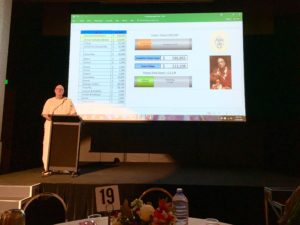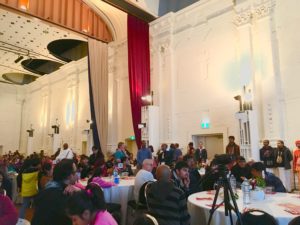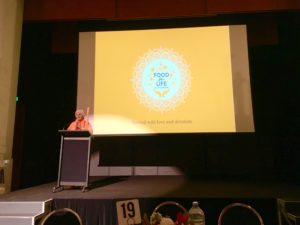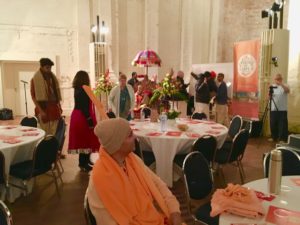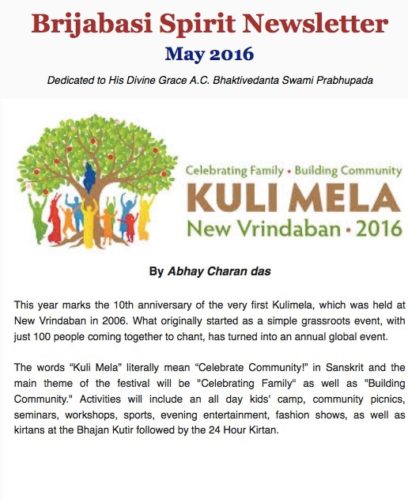
IS VEDIC SHASTRA OUTDATED ?
Are Vedic texts or shastra antiquated and irrelevant, incompatible with modern life ? Is shastra weakened by the influence of time ?
By Gautam Saha
What is Vedic Knowledge ?
The stupendous written texts of Vyasadeva, the empowered literary incarnation of the Lord, have enabled a vast body of knowledge to come down to us, passed on by scrupulously honest and scholarly acaryas, mercifully unadulterated. This reservoir of information is Vedic knowledge. Unless one is specifically empowered by the Lord, it is not possible for an ordinary human to put into text the worldly and spiritual knowledge covering all vital areas of the human experience, in just one lifetime. The Bhagavatam refers to Vyasadeva as Krsna Dwaipayana Vyasa. The medium is of course Sanskrit, the authentic language of Vedic scripture. Vedic texts, or shastra, have descended from the most exalted parampara or lineage of spiritual masters comprising Lord Visnu, Brahmaji, Narada Muni, Vyasadeva and Sukhdev Goswami (Bhagavatam 12.13.19).
Notwithstanding my own unworthiness, I shall make an attempt, however feeble, to examine Vedic knowledge from the perspective of one trained in science, and proffer a greenhorn’s cursory view of this sublime and fascinating treasure, humanity’s inheritance. Sri Caitanya Mahaprabhu (1486-1534 A.D.), bhakti incarnation of the Lord and impeccable Vedic scholar, considered shastra as divine sounds which issued directly from the mouth of the Lord. It is therefore free from mistakes, illusion, imperfect senses or the propensity to deceive. Amongst shastra, the highest are the Srimad Bhagavad Gita, spoken directly by Lord Krsna to Arjuna amidst the two armies facing off at Kurukshetra, and the Srimad Bhagavatam (Bhagavad Purana), spoken by Sukhdev Goswami to King Pariksit, who had forsaken his kingdom prior to his impending death from a snakebite, while the assemblage of sages listened with rapt attention, on the banks of mother Ganga. The only way to understand shastra is unconditional acceptance from the mouth or writings of acaryas.
Vedic theism consists of a few sampradayas or systems, each representing the first guru in that lineage. Sri Caitanya’s Gaudiya theism has accepted the lineage from Brahmaji thru Madhavacharya. Hence this lineage is referred to as the Brahma-Madhava-Gaudiya Vaisnava Sampradaya.
What method does one use to evaluate Vedic shastra ?
Normal everyday occurrences or phenomena can be verified by using the various standard and conventional methods available, for the satisfaction of rational minds by correlation of scientifically processed data with occurrences in nature. We shall see how the same methods are unsuitable and totally inadequate for the evaluation of Vedic shastra.
1. In the physical realm, such as the disciplines of chemistry or physics, theories or propositions can be studied by carefully designed experiments in laboratories, results obtained, and theories authenticated therefrom. The experiment and its results are tangible. Laws of motion, gravity, chemical reactions, etc; are all directly provable in basic laboratories even by young students.
2. In the study of macro natural phenomena such as typhoons, eclipses, volcanic eruptions, etc; scientists, by dint of knowledge collated so far in their respective fields, anticipate events and set up apparatus and sophisticated instruments. After study of the data provided by the natural phenomena, scientists are able to postulate their theories which are more or less accepted by the scientific community. The degree of scientific acceptance determines the general acceptance of any particular theory or hypothesis in human society.
3. In the realm of biology, which embraces all the living bodies on earth and their internal physiology, structure and pathology, detailed scientific work and classifications of genus have been determined by successive generations of the scientific community and are more or less in place, and established, as a vital branch of the human knowledge base.
4. It has been seen in many scientific fields that further scientific work either validates or even repudiates the earlier work, because the earlier hypothesis was too simplistic or not sophisticated enough to accept anomalies or deviations in available data. To illustrate this point, let us take the case of atomic theory. The ancient Greeks thought that matter was made up of atoms (atomos ) which actually meant ‘uncuttable’. This was more or less a philosophical concept. But scientific work at the turn of the twentieth century revealed that atoms comprised smaller particles which could exist independently and separately. Further work on the Higgs field within the last ten years now suggest the existence of still smaller sub particles whose physical verification is more by surmise and complex mathematical models than by material proof. In other words, human knowledge or awareness keeps changing with the latest scientific research, either adding to the existing knowledge base or negating certain earlier assumptions.
5. Shastra is essentially spiritual knowledge. This is on a different realm or plane than material or physical knowledge. There is no established norm or any attempt made so far to logically authenticate spiritual knowledge in any civilization. As a rough example, one cannot use the principles of ayurveda to authenticate the physical processes in allopathy and vice versa. Since shastra deals with the realm of the soul, the Supersoul, their relationship and pre scientific Creation, humanity has not yet evolved any system for the audit or authentication of this knowledge by known means. On a related note, well documented ‘out of body’ or ‘near death experiences have forced even the doubters to think anew about the existence of the soul within all living bodies, the basic building block of Vedic shastra.
6. The Ten Commandments which were supposedly spoken by God directly to the prophet Moses, stated in the Old Testament, are the moral boundaries for human behaviour, applicable to all cultures equally. No one has as yet refuted them, even though many doubt that God Himself had spoken to Moses. Validation of Vedic shastra must necessarily come from within it, by inter support, consistency, cross referencing and the unconditional acceptance by distinguished scholars and acaryas in the parampara and down history.
Scriptures are the basis of spiritual knowledge
Down the ages, Vedic texts or shastra have been clarified and validated by great scholars like Ramanujacarya, Madhavacarya and others. Additional validation came from poet saints such as Tulsidas, Meerabai, Jayadev, and many more, each of whom embellished different aspects of Vedic theism, and effected significant socio-cultural impact on society.
Modern science has built upon path breaking work by Newton, Galileo, Kepler, Mendeleev, Einstein, and many more. These scientists postulated fundamental laws of nature through mathematical models, enabling humankind to build steadily upon these foundations. If even one of these propositions was incorrect or flawed, the colossal edifice of modern pure sciences and applied sciences, and their widespread applications, would have crashed into irrelevance long ago.
Similarly, the Gita, the Bhagavatam, and supplementary Vedic texts, are the foundation of India’s spiritual, theistic and cultural tradition. Whereas the Gita is the primary treatise explaining fundamental principles, the Bhagavatam is an advanced treatise, revealing ways to be freed from material work, transcendental knowledge, renunciation and devotion.
Whereas the Gita unequivocally explains righteousness and duty, the Bhagavatam provides deep insights into transcendental knowledge. Anyone who sincerely endeavours to understand it, becomes liberated (Bhagavatam 12.13.18). Acaryas have explained that attaining release from the material condition should be the goal of all intelligent humans. “The Srimad Bhagavatam is declared to be the essence of all Vedanta philosophy. One who has experienced satisfaction from its nectarean mellow, will never be attracted to any other literature (Bhagavatam 12.13.15).”
Vedic texts are so flawless and sublime, that any attempts to disparage them by one not in the guru parampara, will be pernicious, and a ludicrous presumption in questioning the intellectual integrity and unparalleled scholarship of an empowered entity like Vyasadeva. In order to invalidate or repudiate Vedic texts, one would have to be an intellectual entity equalling or surpassing Vyasadeva, an impossibility for sure, with no claimants or takers since time immemorial.
Proof of widespread acceptance
Man’s intelligence is confounded and stupefied by mahamaya, the eternal creative and illusory potency of Krsna (Visnu). Lord Shiva, an uttama addhikary and controller of the material mode of ignorance, therefore prayed, “O My Lord, I, who is considered to be the best of the demigods, and Lord Brahma, and the great rishis, headed by Marici, are born of the mode of goodness. Nonetheless, we are bewildered by your illusory energy and cannot understand what this Creation is. Aside from us, what is to be said of others, like the demons and human beings, who are in the base modes of material nature ? How will they know You ? (Bhagavatam 8.12.10)”.
Common human intelligence and faculties, however refined, can never unravel on their own account the great mysteries of Creation and the conundrums of material life. Vedic knowledge or shastra, like the sun, empowers one to dispel the clouds of illusion covering material existence, and understand Creation and the Lord Creator, as also the journey of the individual atma and its relationship with the Paramatma manifestation of the Lord, resident within every living heart and Who is the witness and permitter for the actions of every living entity.
The subject matter of preaching by an overwhelming majority of today’s acaryas is based primarily on these scriptures, and not other texts, thus consolidating their trustworthiness and profundity. These scholars, hailing throughout India, provide contemporary endorsement that Vedic texts are as valid today as when they were first spoken and written. Irrespective of sampradaya or individual merit, whatever knowledge, range, and spirituality they possess, arise from Vedic texts only, and not from comparative philosophy, speculation or empiricism. Saints and scholars of all denominations and down the ages, have considered Vedic shastra the fountainhead of spiritual knowledge, unambiguous, indisputable and incomparable. Thus far, no subsequent text has even ventured to supercede or counter them. One who assimilates this knowledge fully, is freed from all illusion, and shapes his philosophy and lifestyle as Krsna desires, becoming a perfect yogi (Gita 18.73).
Many bestselling authors or spiritualists today live by their wits and earn their livelihood like ordinary people, hankering for and exhibiting materially opulent lifestyles. They deliver their version of knowledge or enlightenment to gullible or desperate persons, in some form of material exchange. Such are not gurus in the Vedic parampara or lineage, who have gifted shastra to mankind, due to unbounded and causeless mercy for the lost souls of kaliyuga.
Vedic knowledge is eternal
Since the Lord overrides time and is not subservient to it, Vedic knowledge or shastra, emanating from the Lord, is also timeless. The peaceful Vedic worldview has withstood centuries of dereliction and marauders from distant lands. Despite repeated buffeting, Vedic spirituality remains unsullied and undefiled, showing resilience and innate resonance. Because the knowledge is pure and incontrovertible, the tradition remains alive and robust. “Ramnaam satya hai, baaki sab asat hai”, (only the name of Lord Ram is truth, everything else is falsehood), alluding to The Supreme Personality of Godhead Who descended as maryada purushottam, the ideal man, eons ago. There is a saying in Bengal, “rakhe Krsna mare ke, mare Krsna rakhe ke ?” (He whom Krsna protects, who can kill ? He whom Krsna wants to kill, who can protect ?). Both these simplistic aphorisms, iterated by a vast majority of ethnic Indians, proclaim the highest underlying principle of shastra, simultaneously authenticating their widespread (even if limited) understanding, and acceptance.
Dedicated outreach and dissemination programs of spiritual organizations have enabled study of India’s Vedic treasure around the globe, utilizing user friendly and contemporary formats, with scholarly and faithful translations into Hindi and English as well as the other Indian and international languages. The Gita is now available in more than thirty major languages around the globe. Well begun is half done. If this peerless activity continues, Vedic shastra will perpetuate, and be assimilated and cherished by scholarly and honest men in the centuries and millennia to come. Future acaryas will be spiritual lighthouses in civilizations beleaguered by the increasing darkness of material eclecticism and speculative empiricism.
Gautam Saha
 Giriraj Swami read and spoke from Srimad-Bhagavatam 5.18.9.
Giriraj Swami read and spoke from Srimad-Bhagavatam 5.18.9.




 By Caitanya candrodaya dasa
By Caitanya candrodaya dasa By Chirag Dangarwala
By Chirag Dangarwala







